W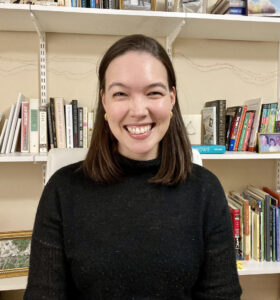 elcome to Celia Lee, an executive editor at Simon & Schuster Books for Young Readers, where she works with creators on all things illustrated, from picture books and early illustrated chapter books and middle grade to graphic novels for all ages.
elcome to Celia Lee, an executive editor at Simon & Schuster Books for Young Readers, where she works with creators on all things illustrated, from picture books and early illustrated chapter books and middle grade to graphic novels for all ages.
The list of authors and illustrators she’s partnered with is wow-worthy. To name just a few:
Celia previously worked at Scholastic, where, in addition to editing, she helped start their employee diversity committee as well as coördinated their partnership with We Need Diverse Books ™. She also served for two years as a member of the Children’s Book Council (CBC) Diversity Committee and is a mentor for POC in Publishing.
As far as academic credentials go, Celia studied English Literature and Art History at Virginia Tech and earned a MS in Publishing from NYU.
Let’s learn more about Celia and her work right now!
RVC: Rumor has it that you were a fan of Charlotte’s Web as a child. What about E.B. White’s book appealed so much?
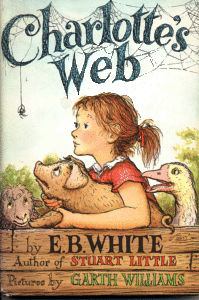 CL: Fan was an understatement–I was obsessed! I think it was the first book I read that made me feel like I was important and that I could handle important topics, like death and growing up. I have always had a penchant for being mopey and melancholy and White’s lines about the changing of the seasons and our state of existence spoke to me in a way that made me realize books could really see you.
CL: Fan was an understatement–I was obsessed! I think it was the first book I read that made me feel like I was important and that I could handle important topics, like death and growing up. I have always had a penchant for being mopey and melancholy and White’s lines about the changing of the seasons and our state of existence spoke to me in a way that made me realize books could really see you.
Plus, spiders really are heroes!
RVC: I’ve been a lifelong fan of White myself. Not as much for Charlotte’s Web or The Elements of Style–which are both terrific–but rather this letter he wrote. Have you encountered it before?
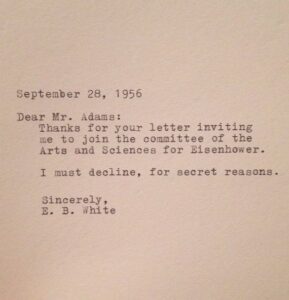
CL: Yes! It’s deliciously perfect–I’ve been keeping that line handy in my mind palace for when I really have to back out of something with style. 🙂
RVC: Yeah, White’s pretty terrific. Now, back to you! At what point did you realize you were going to work in publishing? That English Lit + Art History combo platter has me wondering…as does that internship with the American Physiological Society!
CL: I actually sort of suspected maybe publishing was a possibility during my senior year of high school. I had a wonderful and inspiring AP English Lit teacher, Mr. Craver, who mentioned that working in books was a thing and that was the tiny little hopeful spark I held onto and kept feeding and feeding all throughout college with my coursework.
The APS internship was a little bit random! I was going to move to New York in the fall for grad school, but I needed a job that summer and I found the posting on Craigslist. I helped out in their communications department, drafting press releases on scientific studies. It was fun to learn about something totally different, and I got to talk to scientists and people excited about science!
RVC: After your undergrad degree at Virginia Tech, you earned an MS in Publishing from NYU. How common is it now for agents and editors to earn advanced degrees or certificates in publishing?
CL: This is all very unscientific, but I’d say about a quarter of the folks I know working in publishing have an advanced degree or certificate. It’s by no means mandatory, but for a lot of us that went down that path it was a way to get the foot in the door–many of us came from places that were not close to NYC where the major publishers are. It provided access to folks working in the industry and fostered connections. I’m not sure if that’s the same for people in programs now, though, since so much of the industry has changed since the beginning of the pandemic.
RVC: What are some of the most useful things you learned in that program?
CL: Learning about the practical business stuff has been very useful. I took a great class on project management that has saved me tons of times on projects, that’s for sure.
RVC: Let’s get from Then until Now(ish). Could you briefly describe your career journey leading up to your role as Executive Editor at Simon & Schuster Books for Young Readers?
CL: After a stint as an intern/editorial assistant at a small library publisher, I found a job as an editorial assistant in Scholastic’s former Book Clubs division, working on the ins and outs of curating the baby-toddler-preschool book clubs. That got me excited about board and picture books and how they were made, so when the Trade division had an opening in their Cartwheel books imprint, I immediately jumped in. Then after a few years there, the Book Clubs group needed someone to coördinate their We Need Diverse Books program, which was too exciting not to pass up, but when the pandemic happened I went back to the Trade group for one last time. Then the S&S BFYR was looking for an experienced picture book editor, and that was that! I’ve been here for about 2 years now. Sorry, that wasn’t brief at all!
RVC: No problem–we always appreciate a useful robust here at OPB! Now, who has been your biggest career cheerleader and mentor, and in what ways have they impacted your growth in the industry?
CL: I’ve been fortunate to have so many cheerleaders and mentors during my time working in publishing. All of my bosses have been mentors to me, for example. I’ve learned so much from them in different ways, but mostly on how to be a good editor and advocate. But the lovely thing about the kidlit community is that there is an abundance of kind-hearted, caring, and talented folks at every level in every department–so many of my colleagues have been mentors to me whether they know it or not just by being there and leading by example. It’s what keeps me excited about work.
RVC: What was the story behind the first picture book you acquired?
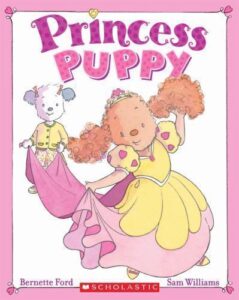 CL: You know, the memories behind some of my first picture books are a little hazy since I acquired board books and picture books in one big jumble when I started, but one of the early ones was this paperback picture book called Princess Puppy that was written by the late great Bernette Ford. I don’t think it’s in print anymore, but that really stuck out in my mind.
CL: You know, the memories behind some of my first picture books are a little hazy since I acquired board books and picture books in one big jumble when I started, but one of the early ones was this paperback picture book called Princess Puppy that was written by the late great Bernette Ford. I don’t think it’s in print anymore, but that really stuck out in my mind.
RVC: What surprised you most about the process of bringing that book to life?
CL: The editorial process was definitely surprising, only because I was just this little assistant editor working with this legendary author who had created and led my imprint so I had no idea what to expect!
RVC: As an editor, what would you say is the most rewarding part of your job and why?
CL: There’s nothing like that feeling of reading a manuscript or dummy and instantly falling in love with it and then being able to tell that author or illustrator that yes, we want to make it into a book! That little kick-off celebratory feeling that you share with the creator just fuels the rest of the process for me.
RVC: What are the key elements that make a picture book story engaging and memorable for young readers?
CL: Readaloudability, which Word is saying isn’t a word, but we all know it is. Picture books are supposed to be read aloud. The read needs to hold up the first time and the hundredth time!
RVC: Absolutely!
CL: I’m trying to think of something clever that will pair with readaloudability that applies to images–illustration scanability? Storystration? Basically the illustrations need to have multiple places for little eyes to land on and explore. Most picture book readers aren’t reading–the images are all they have, so those images better be telling a story, too!
RVC: Terrific point, Celia. What are your thoughts on Back Matter?
CL: It’s great, but not needed for every book.
RVC: What about rhyme?
CL: It’s so integral to the early story time experience, yet I’m seeing fewer and fewer rhyming stories. A really good rhyme builds connections and sticks with you and opens the door to a love of reading. But writing in rhyme is not for the faint of heart–you have to remember that with rhyme comes meter, and that usually throws folks off.
RVC: What’s your assessment of where the industry is today in terms of diversity and representation?
CL: We’ve made some progress, but there’s still a long way to go, especially at the manager and executive levels in all departments. (See the POC in Publishing Industry Survey or Lee & Low’s Diversity Baseline Survey for more info).
RVC: How can people like me—and teachers, librarians, students, parents, and children—help?
CL: I think it’s important to ask about it and to elevate voices that are advocating for a publishing industry that better reflects what our readership looks like. And to demand for more diverse books and authors in general, too–those numbers aren’t great, either.
RVC: Let’s help out some of the creatives who read this blog. What tips do you have for illustrators looking to appeal to S&S BFYR when it comes to building their portfolios?
CL: I’ve said this in other places, but illustrators should be sure that they not only show figures, but also full-blown scenes in their portfolios. It’s great to see that you do characters really well, but can you show those characters moving and reacting? That’s a question that comes up a lot when we see an artist’s portfolio with potential–sure, they can draw, but can they tell a story with their work?
RVC: In other interviews, you’ve mentioned the importance of characters’ eyes in conveying emotions in picture books. Can you elaborate on other critical elements in illustrations that can heighten a child’s engagement with the story?
CL: This is going to be very vague, but I always say a great illustration goes beyond what’s written and shows something more. A great illustrator brings new ideas to the illustration, to the story.
RVC: Let’s not ignore the writer folks. Are there any specific themes or subjects that you’re particularly interested in picture books submissions at S&S BFYR?
CL: I’m always in the market for humor and character-based stories. And stories with a twist (or multiple twists, gasp!) delight me to no end.
RVC: What’s the most common reason to say no to a submission that’s 95% “got it goin’ on!” Where do writers tend to fall short of the I MUST BUY YOU impulse we all want editors to feel?
CL: Oooo that’s a hard one! I think there are so many factors that could contribute to that 5%. I feel like lately the endings are what’s bothering me. Right now, if that ending doesn’t deliver, then it really takes me out. But if you ask me that in six months, I’m sure I’ll have a different answer for you.
RVC: I’m curious—what’s your dream project to work on, if given the opportunity?
CL: I’ve gotten to work on so many dreamy books, but I guess my Everest is that perfect unreliable narrator story.
RVC: One last question for this part of the interview. Can you give us a sneak peek into some exciting new titles S&S BFYR has in the pipeline?
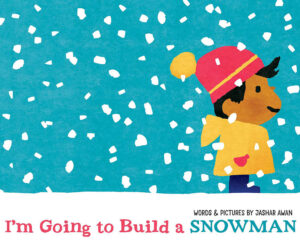 CL: There are so many good ones, so it’s hard to whittle it down, but a couple that are coming out in the next few months are I’m Going to Build a Snowman by Jashar Awan, Remembering by Xelena Gonzalez and illustrated by Adriana M. Garcia, and The Wishing Machine by Jonathan Hillman and illustrated by Nadia Alam.
CL: There are so many good ones, so it’s hard to whittle it down, but a couple that are coming out in the next few months are I’m Going to Build a Snowman by Jashar Awan, Remembering by Xelena Gonzalez and illustrated by Adriana M. Garcia, and The Wishing Machine by Jonathan Hillman and illustrated by Nadia Alam.
RVC: Alright, Celia. It’s time to launch into the LIGHTNING ROUND! The point values are tripled and the One-Minute Timer of DOOM*! is ready to get going. Are you ready? (*DOOM not guaranteed)
CL: Bring it on! I love answering things quickly, especially with the threat of DOOM!
RVC: Would you rather crank some tunes, read a book, or binge-watch Netflix?
CL: I know as a book person, I’m supposed to say read a book, but I am a binge-watching girly through and through! I just love stories in general, whatever that form might be.
RVC: If you could instantly become an expert in any field, what would you choose?
CL: Demolitions expert, hands down.
RVC: Your life is on the line. You need to sing one karaōke song to save it. What do you go with?
CL: I’ve been waiting for this question all my life. I pride myself on keeping an updated list of karaōke songs on my Notes app! My go-to is “Call Me” by Blondie.
RVC: What’s the last picture book you read that actually made you LOL?
CL: Lucy Ruth Cummins’ A Hungry Lion, or A Dwindling Assortment of Animals. It’s just one big giggle fest for me.
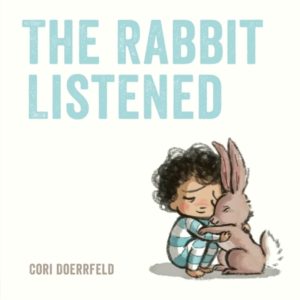 RVC: What’s the One That Got Away?
RVC: What’s the One That Got Away?
CL: The Rabbit Listened by Cori Doerrfeld. I don’t think I’ll ever get over it!
RVC: Share a quote from a picture book you love.
CL: Technically it’s a novelty book, but “I will love you as the iceberg loves the ship, and the passengers love the lifeboat and the lifeboat loves the teeth of the sperm whale, and the sperm whale loves the flavor of naval uniforms.” from The Beatrice Letters tickles me to no end.
RVC: Thanks so much, Celia! It was terrific having you stop by OPB to share your story.
CL: Thanks for having me, Ryan! These are wonderful questions!

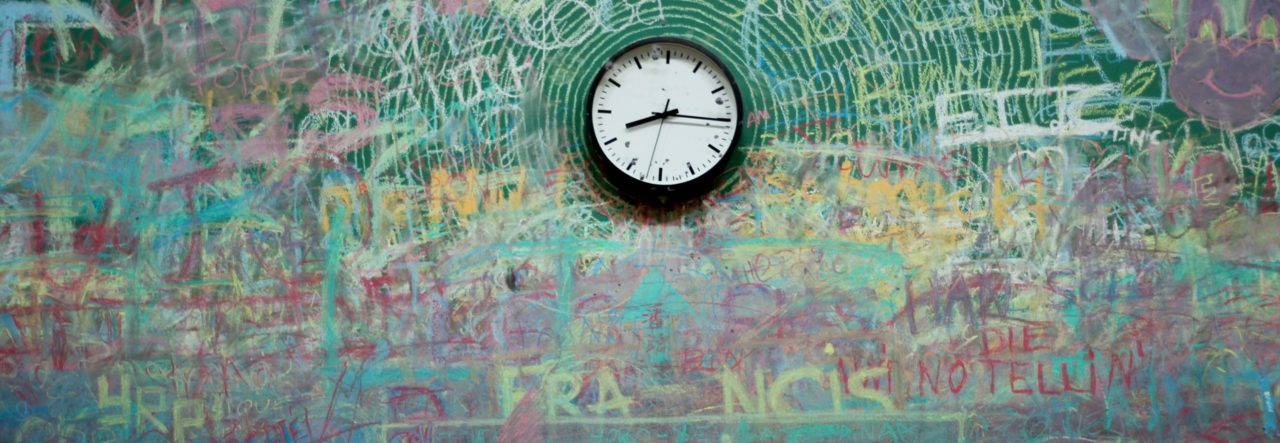
Hello Ryan,
Thank you for all your wonderful interviews! I love them.
Today’s interview with Celia Lee is no exception, but if you, or she, could explain a little more what “CL: I’ve gotten to work on so many dreamy books, but I guess my Everest is that perfect unreliable narrator story.” this response means, I would be grateful. It’s the word ‘unreliable’ that confuses me. I can go whole hog OCD trying to nail what this means to Celia, out of all the many possibilities. Can you help, please?
Thanks!
Hi, Dale. I asked Celia and here’s her clarification. I hope it helps! “By unreliable narrator I mean a first-person narrative where the narrator tries to lead the reader astray in some way.”
Thanks Ryan!
It’s still fuzzy, especially in terms of a picture book text narrator, but I can understand how it might work for MG and YA texts.